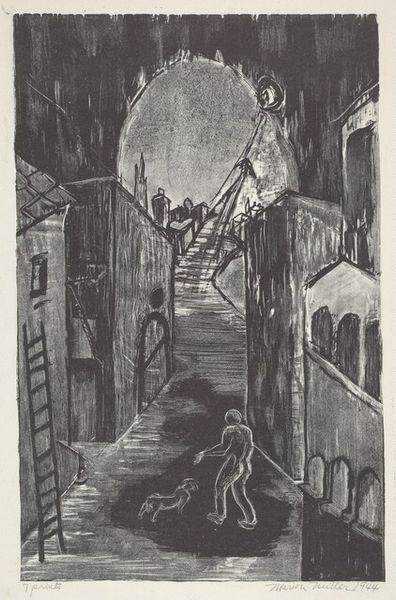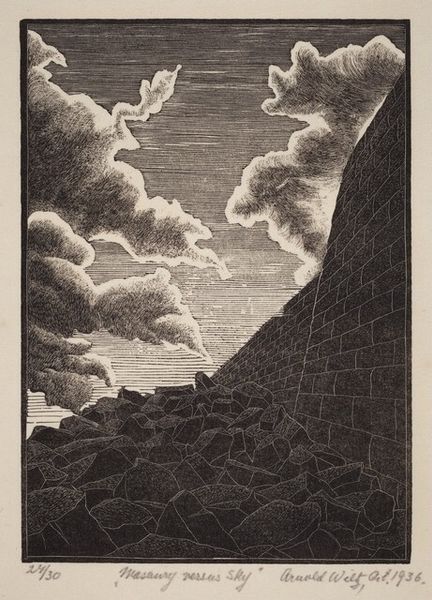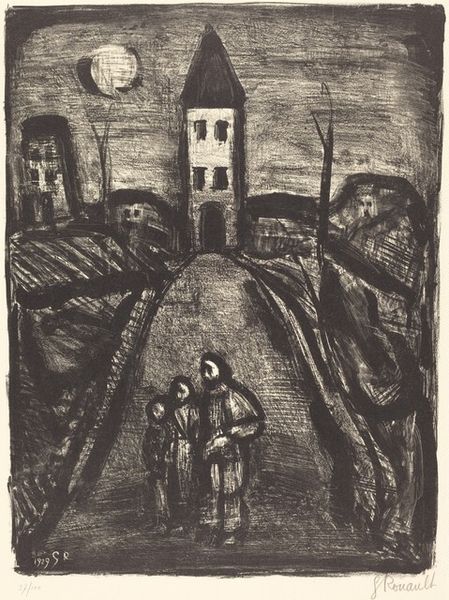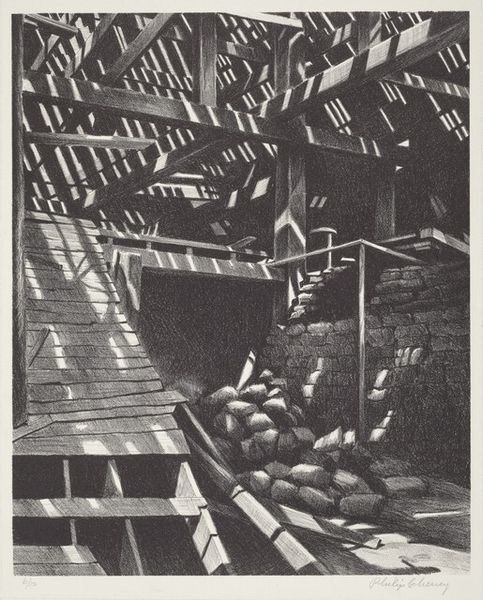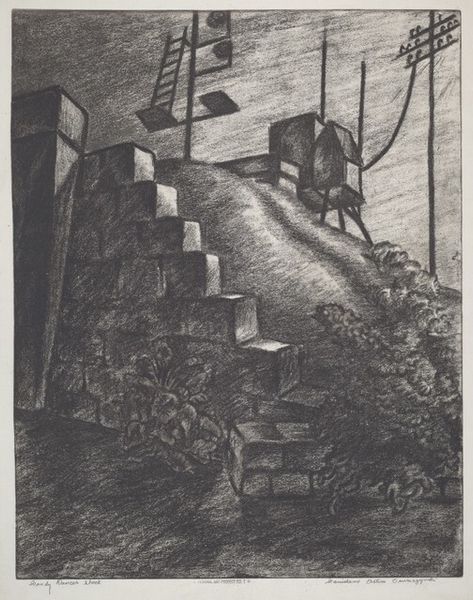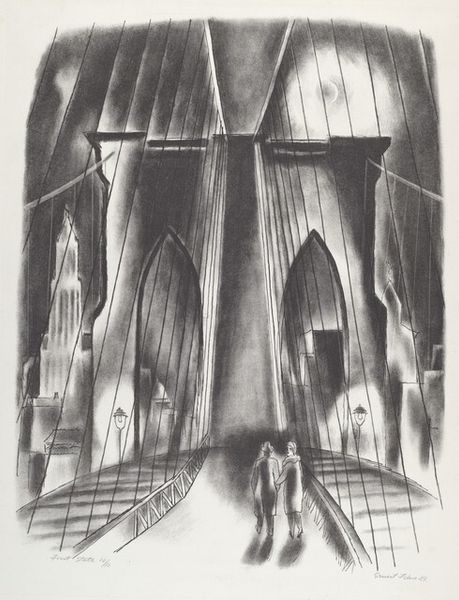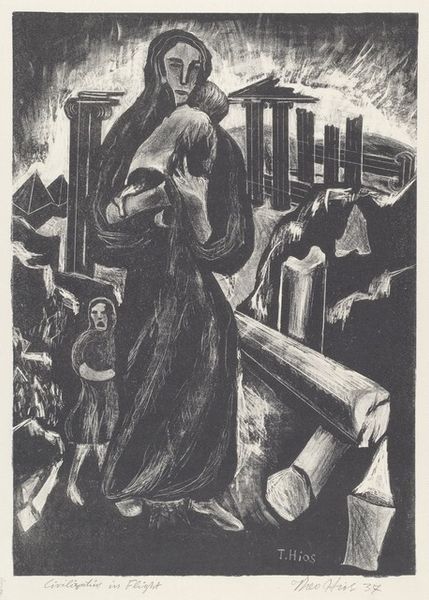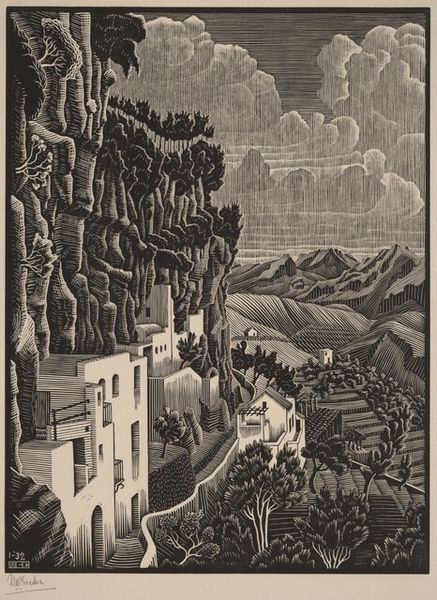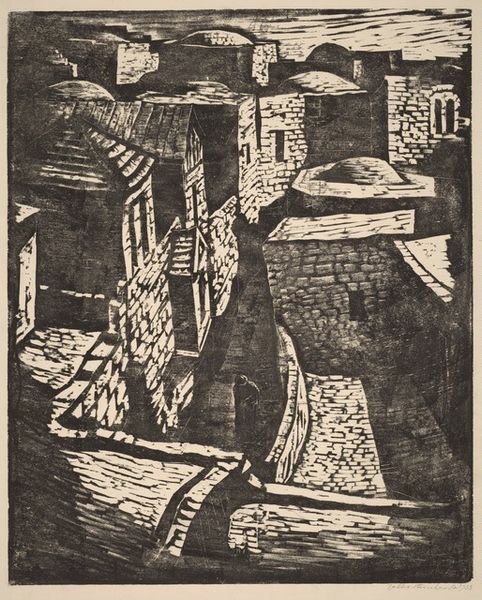
drawing, pencil
#
drawing
#
landscape
#
pencil drawing
#
pencil
#
cityscape
#
regionalism
#
realism
Dimensions: image: 166 x 112 mm sheet: 218 x 141 mm
Copyright: National Gallery of Art: CC0 1.0
Editor: This is "Adobe Ruins" from around 1940, a pencil drawing by Jenne Magafan. It’s a stark and somewhat eerie image, a lonely church steeple rising behind the remnants of what appear to be old adobe walls. It makes me wonder about what happened here, what stories these ruins hold. What do you see in this piece, beyond just the physical structures? Curator: It speaks to the transience of human endeavors. The ruined adobe, a humble material returning to the earth, contrasts with the more assertive church structure, hinting at the enduring power, or at least aspiration for endurance, of faith. But look closer. Isn’t even that steeple somewhat worn, weathered? It creates a visual tension, doesn't it, this interplay between decay and aspiration? What kind of memory do you think this represents? Editor: I see what you mean, both are deteriorating in different ways. It’s like the artist is showing two different types of hope, or maybe two different failures. Perhaps this speaks to the abandoned settlements of the American West, the broken promises and lost dreams represented by those towns? Curator: Precisely! And note the almost geometric starkness of the composition. The shadows, the lines – Magafan is employing a Regionalist style but imbues it with a stark, almost melancholic tone. Do you feel that tension contributes to the overall emotional impact? Editor: Absolutely. The sharp contrasts create a feeling of unease. It’s beautiful, but also unsettling, as if nature is slowly reclaiming what was once human-made. I hadn’t picked up on the Regionalist style, but it makes sense given the subject. I'll remember the starkness and visual tension for future observations. Curator: A landscape of the mind, a place where material culture confronts the immutable forces of time and nature.
Comments
No comments
Be the first to comment and join the conversation on the ultimate creative platform.

